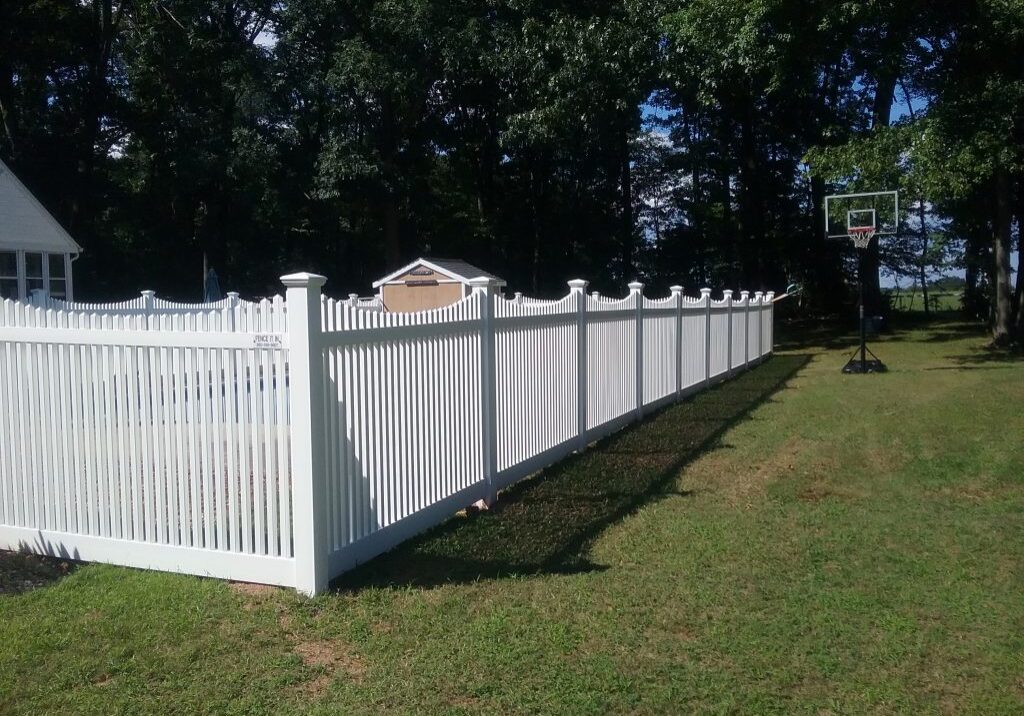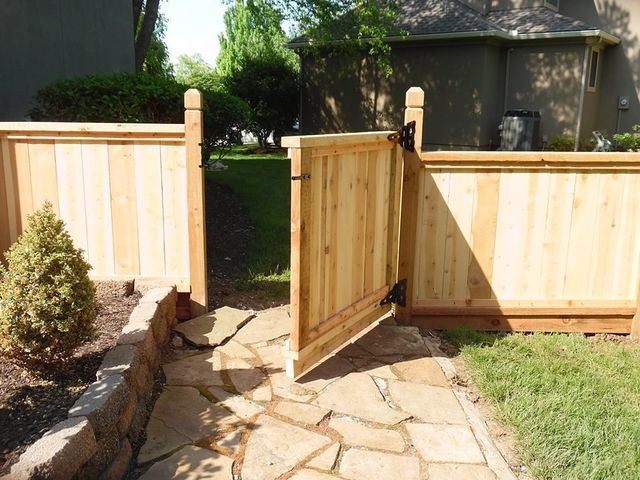All Categories
Featured
Your fence is exposed to numerous climate conditions year-round, and while it offers as an important part of your property, it's additionally one of the most susceptible components when it comes to weather-related damages. Below are some effective techniques to secure your fencing from weather-related damage.
Wood Fences: While wood is a timeless selection for fencing, it is susceptible to rot, warping, and bug damages, specifically in areas with high moisture. Pressure-treated timber or cedar is a lot more long lasting, but regular maintenance is essential to keep it in great condition. Plastic Secure fencing: Plastic is a superb option for those looking for a low-maintenance and weather-resistant fence. It's unsusceptible moisture, won't warp or fracture in the warmth, and stands up to fading from UV rays. Steel Fencing: Wrought iron and light weight aluminum are sturdy products for fencing, however they need a rust-resistant covering to shield them from corrosion because of wetness. A safety covering or routine maintenance can stop rust and expand the life of steel fencings. Compound Secure Fencing: Made from a mix of wood fibers and plastic, composite fencings are highly immune to weather elements, including uv, warmth, and wetness rays. This material uses a balance of toughness and aesthetic allure. Choosing a material suited to your environment will certainly provide better defense for your fence in the long term.
Seal or Discolor the Timber: Using a top notch sealer or tarnish to your timber fencing produces a water resistant obstacle that protects against wetness from going into the wood. It additionally aids shield the timber from UV rays, which can cause discoloration and drying out. Reapply Sealer Consistently: In time, the protective barrier of your sealant or tarnish can use down. Depending on your environment, it's a great concept to reapply every one to 2 years to keep the wood secured. This therapy will certainly protect the fencing's appearance, avoid rot, and extend its lifespan.
![]()
For added protection, consider utilizing wind-resistant mesh screens or panels in areas where wind is a considerable issue. This additional layer can aid minimize the pressure that the wind puts in on your fencing.
Check Drain: Make certain that the ground around your fencing inclines far from the messages. Proper drainage allows water to flow far from the fence, preventing moisture buildup. Install Drainage Solutions: In locations where drainage is a problem, take into consideration adding a French drainpipe or gravel around the base of your fencing posts to redirect water away from the structure. Good drainage can protect against rot, rust, and various other kinds of weather-related deterioration.
![]()
![]()
Concrete Footings: Establish fencing blog posts in concrete to stop them from loosening up in time as a result of soil disintegration or changing ground. Steel Braces: Including steel dental braces to fencing blog posts can give added stamina and minimize the risk of leaning or damaging. Enhancing your articles makes sure that your fence will certainly stay in place, even throughout severe climate.
For wood fences, delicately clean the surface area with a light detergent to eliminate dirt and gunk. For vinyl fencings, use a soft fabric and cleansing solution to stop build-up. For metal fences, examine for rust and sand it off prior to applying a fresh layer of paint. Conclusion. Your fencing is a crucial function of your building, and with the best care, it can stand up to the difficulties positioned by the weather. By selecting long lasting products, carrying out normal maintenance, and strengthening weak factors, you can safeguard your fencing from the components and extend its life. Normal examinations, using safety finishes, and taking steps to control moisture and wind exposure will aid make certain that your fencing remains solid, useful, and eye-catching for many years to find.
- Select Weather-Resistant Products. The products you choose for your fencing can have a major influence on its capability to hold up against the aspects. Various materials are better outfitted to take care of specific climate condition. Here's a failure of just how numerous materials hold up versus the weather condition:
Wood Fences: While wood is a timeless selection for fencing, it is susceptible to rot, warping, and bug damages, specifically in areas with high moisture. Pressure-treated timber or cedar is a lot more long lasting, but regular maintenance is essential to keep it in great condition. Plastic Secure fencing: Plastic is a superb option for those looking for a low-maintenance and weather-resistant fence. It's unsusceptible moisture, won't warp or fracture in the warmth, and stands up to fading from UV rays. Steel Fencing: Wrought iron and light weight aluminum are sturdy products for fencing, however they need a rust-resistant covering to shield them from corrosion because of wetness. A safety covering or routine maintenance can stop rust and expand the life of steel fencings. Compound Secure Fencing: Made from a mix of wood fibers and plastic, composite fencings are highly immune to weather elements, including uv, warmth, and wetness rays. This material uses a balance of toughness and aesthetic allure. Choosing a material suited to your environment will certainly provide better defense for your fence in the long term.
- On A Regular Basis Deal With Wooden Fences. If you have a wooden fencing, safeguarding it from wetness, temperature, and sunlight changes is essential. Timber can absorb dampness from rain, snow, or humidity, creating it to rot and degrade. Here's just how you can secure wood fencings:
Seal or Discolor the Timber: Using a top notch sealer or tarnish to your timber fencing produces a water resistant obstacle that protects against wetness from going into the wood. It additionally aids shield the timber from UV rays, which can cause discoloration and drying out. Reapply Sealer Consistently: In time, the protective barrier of your sealant or tarnish can use down. Depending on your environment, it's a great concept to reapply every one to 2 years to keep the wood secured. This therapy will certainly protect the fencing's appearance, avoid rot, and extend its lifespan.

- Install Windbreaks. Strong winds can trigger substantial damages to fences, especially those made from high structures or lightweight products. Wind can fall a fencing or trigger panels to change. Setting up a windbreak is a reliable method to reduce the influence of gusty winds. You can produce a windbreak by planting hedges, trees, or high plants near your fencing. These all-natural obstacles can help disperse wind, protecting against direct gusts from damaging your fence.
For added protection, consider utilizing wind-resistant mesh screens or panels in areas where wind is a considerable issue. This additional layer can aid minimize the pressure that the wind puts in on your fencing.
- Guarantee Proper Drainage Around Your Fencing. Standing water is just one of the leading reasons for fence damage, especially for wooden fencings. Water can weaken the fencing posts, triggering them to rot and degrade more rapidly. To stop this:
Check Drain: Make certain that the ground around your fencing inclines far from the messages. Proper drainage allows water to flow far from the fence, preventing moisture buildup. Install Drainage Solutions: In locations where drainage is a problem, take into consideration adding a French drainpipe or gravel around the base of your fencing posts to redirect water away from the structure. Good drainage can protect against rot, rust, and various other kinds of weather-related deterioration.

- Trim Overhanging Branches and Vines. Trees and plants near your fence may feel like an attractive addition, however they can posture threats when left unchecked. Looming tree branches and creeping plants can create damage to your fence throughout storms or high winds. Furthermore, vines can trap moisture versus wood fences, speeding up the decomposing process. To protect your fence, cut any type of branches or plants that hang over or near the fence frequently. This will lessen the opportunity of dropping particles and prevent moisture buildup.
- Reinforce Fence Posts. The stability of your fencing largely relies on the problem of the articles. Fence messages are susceptible to moving, leaning, and decaying, especially throughout periods of severe climate. It's essential to strengthen the articles to maintain stability if your fence is in a location that experiences high winds or ices up throughout winter months. Some ways to strengthen your fencing posts include:

Concrete Footings: Establish fencing blog posts in concrete to stop them from loosening up in time as a result of soil disintegration or changing ground. Steel Braces: Including steel dental braces to fencing blog posts can give added stamina and minimize the risk of leaning or damaging. Enhancing your articles makes sure that your fence will certainly stay in place, even throughout severe climate.
- Routine Assessments and Maintenance. Normal inspections are necessary for identifying early indications of weather-related damages. Check your fencing after tornados or hefty rainfall to search for issues such as loose boards, drooping articles, or rusted areas. Early discovery of small issues can conserve you from costly repair work later on. Additionally, cleansing your fencing occasionally aids maintain its condition. As an example:
For wood fences, delicately clean the surface area with a light detergent to eliminate dirt and gunk. For vinyl fencings, use a soft fabric and cleansing solution to stop build-up. For metal fences, examine for rust and sand it off prior to applying a fresh layer of paint. Conclusion. Your fencing is a crucial function of your building, and with the best care, it can stand up to the difficulties positioned by the weather. By selecting long lasting products, carrying out normal maintenance, and strengthening weak factors, you can safeguard your fencing from the components and extend its life. Normal examinations, using safety finishes, and taking steps to control moisture and wind exposure will aid make certain that your fencing remains solid, useful, and eye-catching for many years to find.
Latest Posts
Find Out Cut Costs on Car Maintenance with Montclare Auto Repair’s Exclusive Deals
Published May 28, 25
1 min read
Check Out Montclare Auto Repair’s Top Auto Repairs and Why Drivers Trust Them
Published May 25, 25
1 min read
How to Know When Your Car Needs Professional Vehicle Service at Montclare Auto Repair
Published May 24, 25
1 min read
More
Latest Posts
Find Out Cut Costs on Car Maintenance with Montclare Auto Repair’s Exclusive Deals
Published May 28, 25
1 min read
Check Out Montclare Auto Repair’s Top Auto Repairs and Why Drivers Trust Them
Published May 25, 25
1 min read
How to Know When Your Car Needs Professional Vehicle Service at Montclare Auto Repair
Published May 24, 25
1 min read